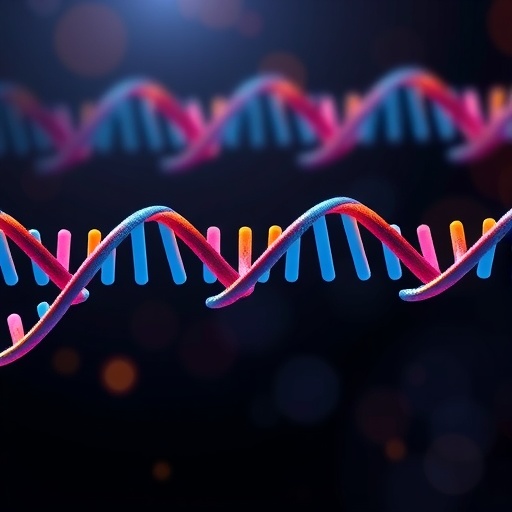In the field of oncology, one of the pressing challenges has always been predicting how patients will respond to chemotherapy. Researchers at the cutting edge of proteomics are actively working on unraveling the complexities surrounding this issue, particularly within the context of acute myeloid leukemia (AML). In a groundbreaking study described in the journal Clinical Proteomics, a team led by Wu et al. introduces ARTN and CCL23 as promising predictive biomarkers for chemosensitivity in AML, showcasing the potential of Olink® proteomics in improving patient outcomes.
Chemotherapy remains a cornerstone in the treatment of many cancers, including AML, a type of blood cancer characterized by rapid proliferation of abnormal white blood cells. The variance in individual responses to treatment can often lead to suboptimal outcomes, making it critical to identify reliable biomarkers for tailoring therapies to each patient’s unique profile. In their research, Wu and colleagues shine a light on two specific proteins—ARTN and CCL23—indicating their roles in the therapeutic response of AML patients.
In essence, ARTN, or artemin, is part of the neurotrophic factor family, influencing neuronal development and function by activating specific receptors. CCL23, on the other hand, is a chemokine that plays a pivotal role in the immune response, attracting monocytes to sites of inflammation. Both proteins had not previously been linked directly to chemotherapy response, making the revelations from this study particularly significant and groundbreaking.
Utilizing Olink® proteomics, the research harnesses a highly sensitive and specific technology designed to measure multiple proteins simultaneously. This method allows for a comprehensive analysis of the proteomic landscape in AML patients, which significantly enhances the ability to detect subtle changes in protein expression that may influence chemosensitivity. The innovative application of this technique marks a critical advancement in understanding the biological underpinnings of AML.
As part of the research, the scientists conducted a thorough investigation that involved analyzing blood samples from AML patients, assessing the levels of ARTN and CCL23 before and after chemotherapy treatments. They discovered that variations in these proteins were closely correlated with the patients’ responses to chemotherapy, thereby reinforcing their potential as biomarkers for predicting treatment efficacy. This correlation is particularly important given the variability in how patients metabolize and respond to chemotherapeutic agents.
Furthermore, the findings suggest that measuring the levels of ARTN and CCL23 could significantly expedite the process of determining the most effective treatment plan for AML patients. This approach not only enhances personalized treatment strategies but also has the potential to reduce the time required to select the right therapeutic regimen, minimizing the risks associated with trial and error methods currently employed in clinical settings.
The implications of such research stretch beyond AML alone, as the integration of proteomic data into clinical practice can pave the way for more effective treatment protocols across various cancers. In an era where precision medicine is becoming increasingly pivotal, such advancements underscore the necessity of leveraging biomarker research to optimize chemotherapy outcomes and overall patient survival.
The study also draws attention to the growing importance of multi-omics approaches in cancer research. By synthesizing data from different biological layers—genomics, proteomics, and transcriptomics—researchers can establish a more intricate understanding of disease pathways, ultimately leading to better-targeted therapies. The introduction of Olink® proteomics into the investigation of AML’s response to chemotherapy exemplifies this innovative trend in medical research.
Moreover, the research team emphasizes the necessity of further studies with larger cohorts to validate these findings and expand the knowledge of these biomarkers. As science progresses, the hope is that ARTN and CCL23 could integrate into routine clinical practice, improving the predictability of chemotherapy responses and tailoring treatments based on each patient’s distinct tumor biology.
The release of these findings contributes to a sense of urgency in the scientific community to accelerate research efforts focused on tumor biomarkers. With many patients facing dire prognoses in the absence of effective therapies, the role of innovative proteomic technologies like those employed in this study cannot be overstated. Just as previous advancements in molecular biology revolutionized our understanding of cancer, the current trajectory promises to yield transformative changes to how we diagnose and treat this complex disease.
This research drives home the message that predictive biomarkers are integral to the future of oncology. As elucidated by the team led by Wu et al., the road ahead is one filled with potential. Embracing novel scientific methodologies will be crucial in delineating which patients will benefit from specific therapies, ultimately enhancing the quality of care and improving survival rates in patients afflicted with acute myeloid leukemia. Every ounce of effort invested in research today lays the groundwork for the sinews of advanced medical practices tomorrow.
In conclusion, the innovative exploration of ARTN and CCL23 as biomarkers for chemosensitivity in acute myeloid leukemia underscores the importance of advanced proteomic technologies in personalizing cancer treatments. This research not only highlights specific proteins that could help predict patient responses but also reinforces the ongoing dialogue regarding the future of tailored therapies in the realm of cancer treatment. The benefits of such work extend beyond laboratory findings, promising a brighter future for patients battling this insidious disease.
Subject of Research: Predicting chemosensitivity in acute myeloid leukemia (AML) using biomarkers.
Article Title: ARTN and CCL23 predicted chemosensitivity in acute myeloid leukemia: an Olink® proteomics approach.
Article References:
Wu, TS., Hsiao, TH., Chen, CH. et al. ARTN and CCL23 predicted chemosensitivity in acute myeloid leukemia: an Olink® proteomics approach. Clin Proteom 22, 3 (2025). https://doi.org/10.1186/s12014-025-09527-7
Image Credits: AI Generated
DOI:
Keywords: Biomarkers, Acute Myeloid Leukemia, Chemotherapy Response, Olink Proteomics, ARTN, CCL23
Tags: acute myeloid leukemia researchadvancements in cancer biomarkersAML chemosensitivity biomarkersARTN and CCL23 proteinschemotherapy response variabilityimmune response in AMLOlink proteomics technologypatient outcomes in AML treatmentpersonalized cancer therapypredictive biomarkers in oncologyproteomics in cancer treatmenttargeted therapies for leukemia





